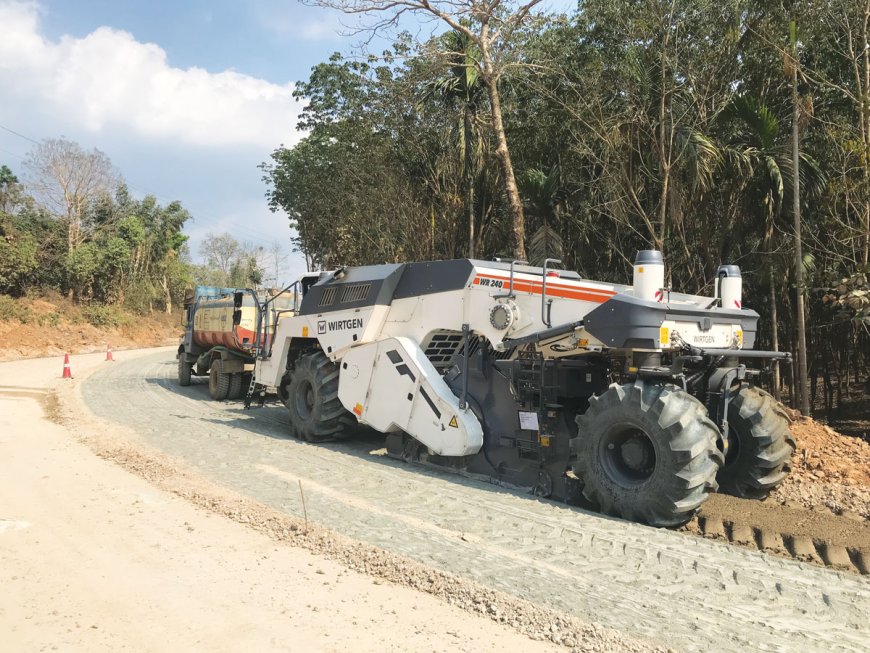Challenge in adoption of digital technologies is non-availability of skilled manpower.
Ramesh Palagiri Managing Director & CEO Wirtgen India There has been accelerated focus from the GoI in budgetary allocation for road construction and also speeding up construction to 40Km a day compared to

There has been accelerated focus from the GoI in budgetary allocation for road construction and also speeding up construction to 40Km a day compared to 27km a day that has been achieved so far. What critical role smarter / intelligent road equipment can play in achieving not only the tar-get, but considerably enhancing the quality of the end product?
India has the 2nd largest road network in the world of 5.8 million km which comprises national highway, state highway, urban and rural roads. National highway in India accounts for 2% of the total road network and carries about 40% of passenger traffic. The Indian government is encouraging PPP (Public-Private-Partnership) model in the highway sector to increase the pace of road construction. The Indian government is planning to increase the national highway network to 2,00,000 km by the year 2022. The future trend indicates that the road construction will increase in India and new technologies will be required to fulfil this need.
In India, Government has laid a foundation of digitization in road construction with its ‘Digital India’ mission and various other schemes. The Ministry of Road Transport and Highways (MORTH) is encouraging the implementation of a ‘Value Engineering Program’ to promote the use of new, emerging and advanced technologies.
Could you brief us on some of the smart / intelligent solutions you offer in road construction (grading / soil & asphalt compaction / and asphalt and concrete paving) with an example of any highway project in India and the techno-commercial advantages?
With its innovative, high-performance and cost-efficient products and technologies for cold mil-ling, soil stabilization, hot and cold recycling, concrete paving and surface mining, WIRTGEN leads the world market in road and mineral technologies. All the machines offered by Wirtgen are equipped with Computer-assisted automated features which not only optimize operating processes and machine productivity but also improve operator performance. Intelligent information and diagnostic systems additionally support and relieve the operator, resulting in a faster and more efficient way of working.
WITOS Fleet View: This digital telematics solution records operating, position and maintenance data from VÖGELE, WIRTGEN and HAMM machines, increasing fleet availability as a result. The telematics solution enables the WIRTGEN GROUP to analyse service-related parameters, such as total operating hours, and to send notifications of upcoming servicing intervals to customers.
WITOS Paving Plus: It is GPS based digital platform which links all parties involved in the project in a network. It collects real time data from various sensor installed on the plant and machinery. Before construction work begins, for instance, the site manager prepares the project using the Control Module.
With WITOS HCQ, HAMM has taken another leap forward, towards the digital construction site. Here, all process data that has been collected is transferred to the WITOS portal via the mobile network. Individual people who have been granted corresponding access rights, such as construction site managers, supervisory authorities or consultants, can then monitor the construction site in real time from any location using the WITOS portal, provided by the Wirtgen Group.
Is the adoption of such smarter / intelligent technology to the expected level? If not, what are the major pain points and how these can be sorted out?
The main challenge in adopting IoT is the conservative mindset of the user industry. These technologies come with little higher cost but in long term, they can be much more beneficial. Providing a varying range of data, Improved worker safety, Real-time reporting, Continuous improvement, Remote Operation, Keeping Track of Equipment, Supplies and Levels, Equipment servicing and repair, Remote usage monitoring, Precise Construction Management, Power and fuel savings. Another challenge in adoption of digital technologies is non-availability of skilled manpower.
From the R&D point of view, what will be the trends in road construction equipment technologies in the next couple of years? What are unique features / solutions from your stable you are excited about?
Customer demand for better, more efficient and cotemporary products will not go away. We have in fact increased our R&D budget to make sure we are ready for future. Most construction equipment has to upgrade to next level of emission norms in next couple of years. This presents a significant challenge for the R&D since Indian market place will not be ready to pay more for higher level of emissions. R&D needs to find innovative ways to introduce new products at a cost customer will be willing to pay for.
Hits: 128








